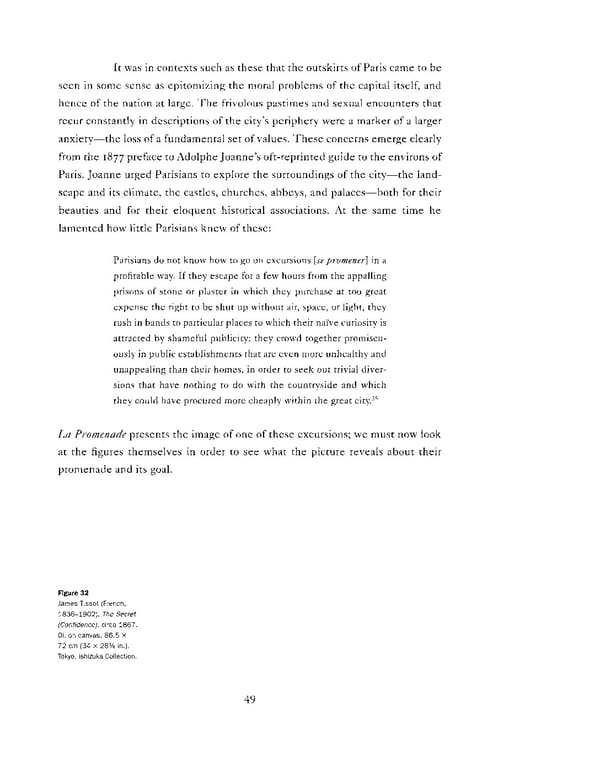It was in contexts such as these that the outskirts of Paris came to be seen in some sense as epitomizing the moral problems of the capital itself, and hence of the nation at large. The frivolous pastimes and sexual encounters that recur constantly in descriptions of the city's periphery were a marker of a larger anxiety—the loss of a fundamental set of values. These concerns emerge clearly from the 1877 preface to Adolphe Joanne's oft-reprinted guide to the environs of Paris. Joanne urged Parisians to explore the surroundings of the city—the land- scape and its climate, the castles, churches, abbeys, and palaces—both for their beauties and for their eloquent historical associations. At the same time he lamented how little Parisians knew of these: Parisians do not know how to go on excursions [se promener] in a profitable way. If they escape for a few hours from the appalling prisons of stone or plaster in which they purchase at too great expense the right to be shut up without air, space, or light, they rush in bands to particular places to which their naive curiosity is attracted by shameful publicity; they crowd together promiscu- ously in public establishments that are even more unhealthy and unappealing than their homes, in order to seek out trivial diver- sions that have nothing to do with the countryside and which they could have procured more cheaply within the great city55 La Promenade presents the image of one of these excursions; we must now look at the figures themselves in order to see what the picture reveals about their promenade and its goal. Figure 32 James Tissot (French, 1836-1902). The Secret (Confidence), circa 1867. Oil on canvas, 86.5 x 3 72 cm (34 x 28 /8 in.). Tokyo, Ishizuka Collection. 49
 Pierre-Auguste Renoir: La Promenade Page 56 Page 58
Pierre-Auguste Renoir: La Promenade Page 56 Page 58